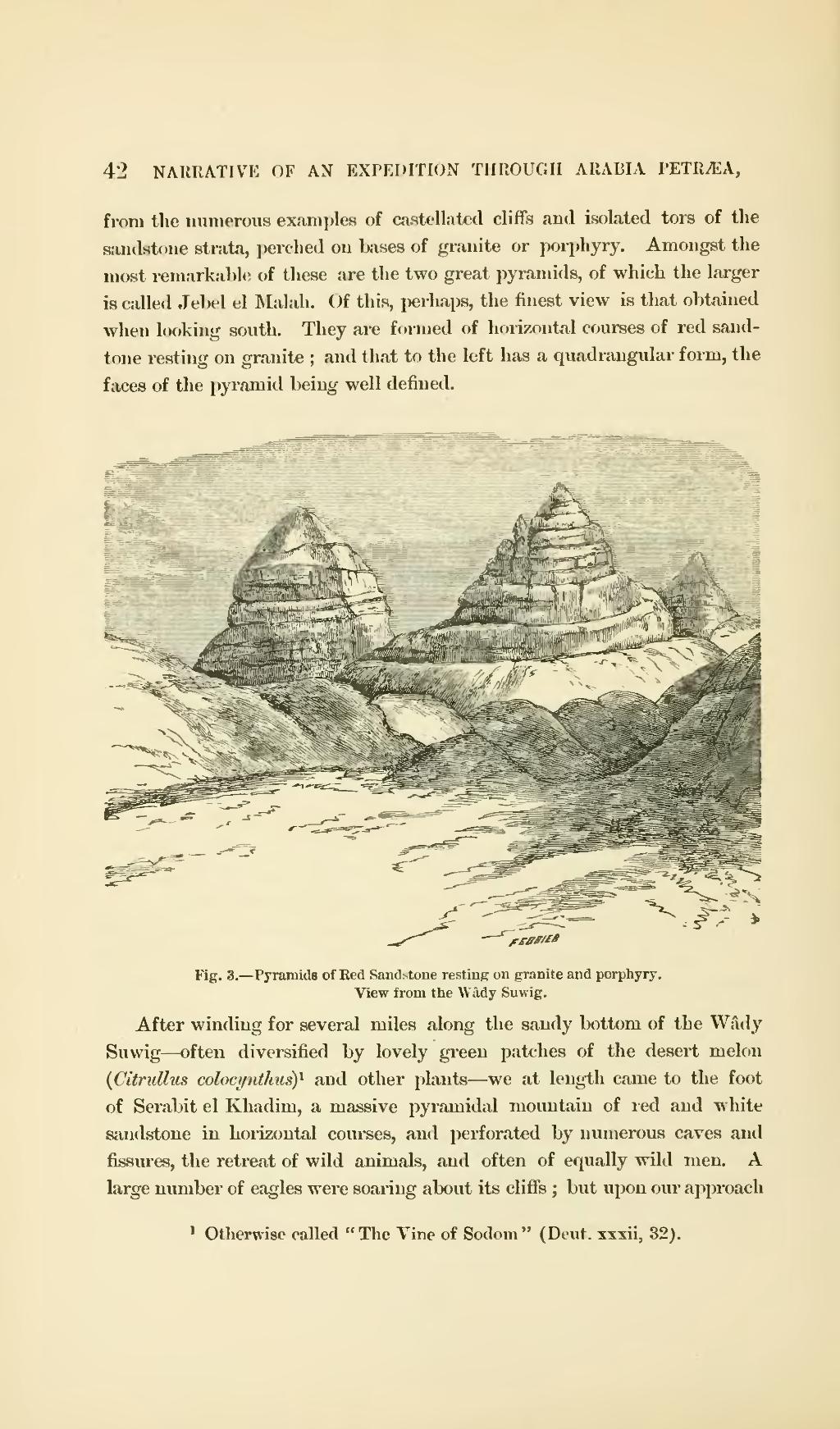from the numerous examples of castellated cliffs and isolated tors of the sandstone strata, perched on bases of granite or porphyry. Amongst the most remarkable of these are the two great pyramids, of which the larger is called Jebel el Malah. Of this, perhaps, the finest view is that obtained when looking south. They are formed of horizontal courses of red sandtone resting on granite; and that to the left has a quadrangular form, the faces of the pyramid being well defined.
After winding for several miles along the sandy bottom of the Wâdy Suwig—often diversified by lovely green patches of the desert melon (Citrullus colocynthus)[1] and other plants—we at length came to the foot of Serabit el Khadim, a massive pyramidal mountain of red and white sandstone in horizontal courses, and perforated by numerous caves and fissures, the retreat of wild animals, and often of equally wild men. A large number of eagles were soaring about its cliffs; but upon our approach
- ↑ Otherwise called "The Vine of Sodom" (Deut. xxxii, 32).

